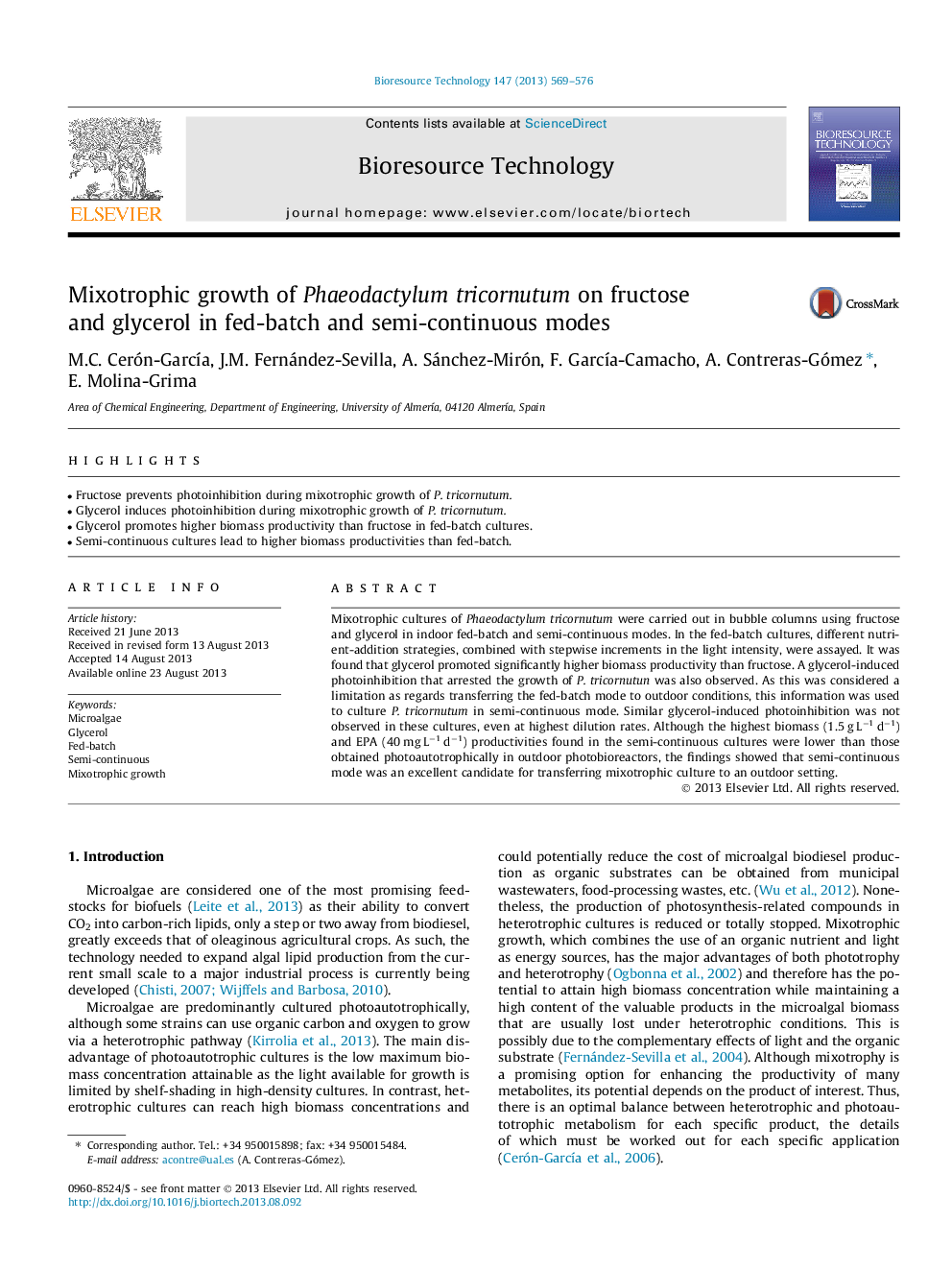| Article ID | Journal | Published Year | Pages | File Type |
|---|---|---|---|---|
| 7081068 | Bioresource Technology | 2013 | 8 Pages |
Abstract
Mixotrophic cultures of Phaeodactylum tricornutum were carried out in bubble columns using fructose and glycerol in indoor fed-batch and semi-continuous modes. In the fed-batch cultures, different nutrient-addition strategies, combined with stepwise increments in the light intensity, were assayed. It was found that glycerol promoted significantly higher biomass productivity than fructose. A glycerol-induced photoinhibition that arrested the growth of P. tricornutun was also observed. As this was considered a limitation as regards transferring the fed-batch mode to outdoor conditions, this information was used to culture P. tricornutum in semi-continuous mode. Similar glycerol-induced photoinhibition was not observed in these cultures, even at highest dilution rates. Although the highest biomass (1.5 g Lâ1 dâ1) and EPA (40 mg Lâ1 dâ1) productivities found in the semi-continuous cultures were lower than those obtained photoautotrophically in outdoor photobioreactors, the findings showed that semi-continuous mode was an excellent candidate for transferring mixotrophic culture to an outdoor setting.
Related Topics
Physical Sciences and Engineering
Chemical Engineering
Process Chemistry and Technology
Authors
M.C. Cerón-GarcÃa, J.M. Fernández-Sevilla, A. Sánchez-Mirón, F. GarcÃa-Camacho, A. Contreras-Gómez, E. Molina-Grima,
